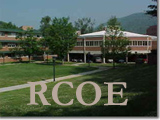Artifact # 3
Context: I created this Literature Circle in my Language Arts Method course during the Fall semester of 2002. A literature circle is a wonderful way to incorporate reading into the classroom, as well as to recognize the different reading levels in a given classroom.
Impact: Literature Circles provide a way to effectively incorporate literature discussions into the curriculum. Students are divided into groups according to their instructional reading level. Within a group, each student is given a different role to perform for a particular section. The jobs are switched as the group reads a new section. The roles to be completed encourage students to look at the selected section in more detail. Students will work with vocabulary, characters, discussion, setting, and plot. Literature Circles allow students to become more involved in their reading and encourage students to look deeper into what they read.
Alignment: Books are assigened to Literature Circle groups based on their developmental appropriateness. The goal of a literature circle is to keep each student on their instructional reading level rather than having the entire class always reading at the same level (Tech Comp II A). Literature Circles help the teacher incoporate literature discussions in a class of diverse learners. Because each student has their own role to complete for each section, students are given the freedom to explore the material. They are given ownership of their work and experience a sense of accomplishment once the role is completeed (Tech Comp VI B). These Literature Circle Units are posted on the Internet. As a teacher, I am able to access these units and use them to assist in meeting the needs of the diverse learners in my classroom (Tech Comp VI C).
In order to create this Literature Unit, it was necessary for me to
recognize the needs of diverse learners. I also had to research appropriate
books for the students' varying ability levels. Literature Circles
are a wonderful way to incorporate group discussion of a particular selection
because it gives students the opportunity to see literature from another
person's perspective, as well as provide guiding questions that help students
analyze the story (INTASC 1).
Because Literature Circles are designed to meet the ends of varying
instructional reading levels, students will be able to feel a sense of
accomplishment. Students will all be performing the same jobs and
will have the same responsiblities in each group, however each group will
be reading on their own level in an instructionally appropriate book.
Literature Circles also meet the needs of different learning styles found
in the classroom. Group discussions cater to auditory and interpersonal
learners. Tasks such as Passage Picker and Discussion Directior can
be very effective for those students who learn visually or in a more hands-on
manner. The role of Character Sketcher is also more hands-on for
this type of learner (INTASC 3).
Individual students and groups are given the opportunity to explore literature through engaging roles provided for them. These roles, and giving new roles to students within a group for each section, keeps the assignment fresh and exciting, and therefore encourages satisfactory behavior and an environment that promotes social interaction and self-motivation (INTASC 5).
NCSCS goals are exhibited throughout the Literature Circle Unit. Each student is given the opportunity to explore the material and use their own creative and critical thinking skills to complete their given roles. These roles are created with the multiple developmental levels of diverse learners in mind (INTASC 7).
The Literature Circle Unit was designed to be published online.
These will serve as a resource for teachers that will assist them in meeting
the needs of diverse learners. Resources like these, enhance
the student's progress because their ability level is being considered
as the assignment is designed (INTASC
10).
